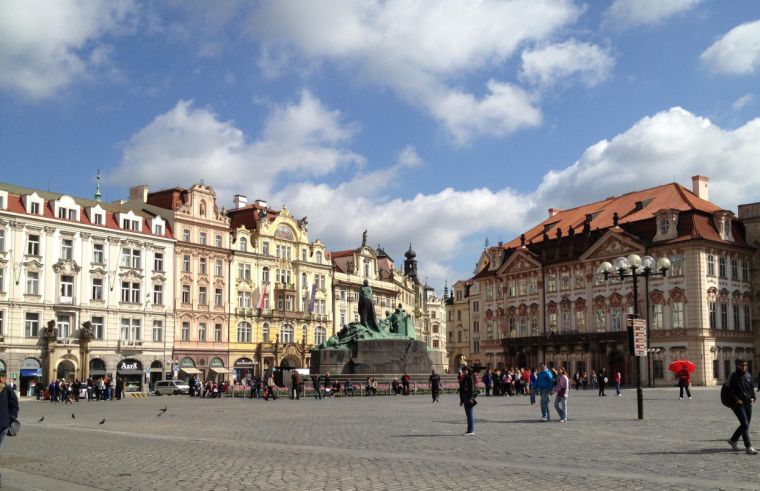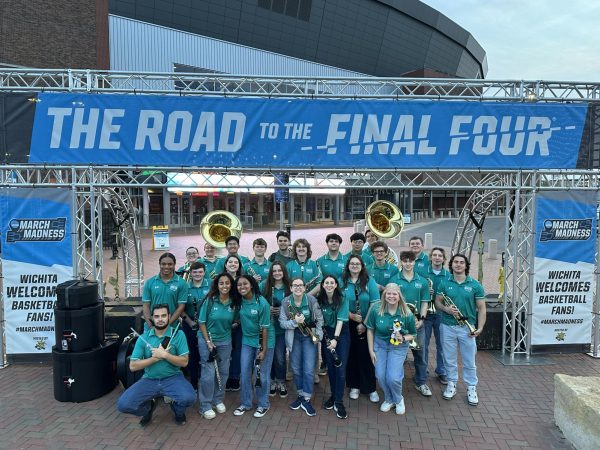Wentworth Scholarship takes student to Prague
From May 10 to May 18, I – armed with a small piece of luggage, two brilliant traveling companions and a travel scholarship from UNC Wilmington – explored one of Europe’s most beautiful cities.
When I tell people that, their minds jump to picture London, Paris, Venice, Berlin. Nope. I was in Prague. When I tell people that, they usually respond with a blank look. My grandfather thought (even after I had returned) that I was in Poland – he insisted on trying to teach me how to say “kiss my ass” in Polish for the entire week leading up to my departure. The woman from the bank asked if Prague was a country. One my friends thought it was in Germany. They were all wrong.
Prague is situated in the middle of the Czech Republic, a relatively young nation (as far as its own sovereignty goes). Many know it by its old name: Czechoslovakia. The Czech people have endured a long and arduous journey to self-governance, while Prague itself has seen the rise and fall of countless dynasties and rulers.
Most recent history remembers Czechoslovakia being handed to Hitler on a silver platter in 1938, making the nation the first taken by the Nazis before World War II started.
Sadly for the Czechs, after the Soviets finally liberated the city in 1945, they decided to stay for a while, and a Communist regime held Czechoslovakia in an iron grip until 1989. It was then that the Czechs finally ousted their Communist leaders and established their own government in an uprising called the Velvet Revolution, so named because of its relatively peaceful nature. Then, in 1993, Czechoslovakia formally separated into present-day Slovakia and the Czech Republic during the Velvet Divorce.
Prague escaped most of these hardships relatively unscathed, and today is a beautiful monument to a bygone era. Reddish-orange roofs blanket the city. The streets are lined with colorful, stately buildings that track architectural history from Gothic to Baroque and beyond. The city is divided by a river; on one side, an ancient (and still inhabited) castle dominates the skyline. The food there is hearty and filling, and the beer is a source of well-deserved national pride.
The inspiration for my visit to Prague was simple: I was in class and my professor reminded us that the applications for the Wentworth Student Travel Fellowship were due in two weeks. My ears perked up. I had never heard of this scholarship, but – after studying in London for a semester – my wanderlust was all consuming. I raced home after class and Googled my heart out. Where could I go? Where did I not get to go when I was in London? Where would I want to go back to? And – I suppose this is important, too – what would I want to study?
I remembered being particularly taken with Prague the last time I was there. I remembered being in one of the many Jewish Museums, staring with a hollow sort of feeling in my chest at a collection of drawings made by children in a nearby concentration camp. I remembered countless names written in precise lettering filling the inside of a synagogue – a list of the deceased. Maybe this was it – after all, why would I study something that didn’t affect me emotionally?
I researched, and my proposal flew on to the application. In a flurry of forms, recommendation letters, and deadlines, I submitted my proposal to the Wentworth Committee: I wanted to study the written works of the children that had been in Terezin, a concentration camp about an hour from Prague.
I was awarded a substantial amount of money by the Wentworth Committee to travel to Prague, and study the camp and the written works of those who once inhabited it. Terezin is an endlessly fascinating place, and I could talk about it for hours (as some of my friends and family can now tell you). When in Prague, I collaborated with the research and education department at the Jewish Museum, and took a day tour to Terezin.
At once harrowing and humbling, Terezin remains a testament to the interminable duality of human nature: as the most unfathomably horrific events of human history were taking place, so were art classes, operas and academic lectures. Terezin is unique in that it was meant to be a concentration camp, a holding area for the greatest Jewish minds in Europe and a propaganda tool. It was not a death camp. It was one stop along the way to death camps such as Auschwitz. This resulted in the bringing together a pantheon of Jewish cultural figures, intellectuals, and visionaries. Plays were written, concertos performed, masterpieces of literature and fine art composed. In the most hopeless of places, a community of incredible strength formed.
The UNCW English Department’s Wentworth Student Travel Fellowship was something that – before this year – I had never even heard of. But today, a week after returning from Prague, I am honored and grateful to have received the financial and academic support to travel. I plan on using my research as the basis for my Honor’s Thesis, and will be presenting on my Wentworth adventure in the fall. If you are an English major and have an interest in a topic, or a place, or an author, I would definitely encourage you apply for the Fellowship. It is one of the most incredible opportunities available through UNCW, and the possibilities are endless.








